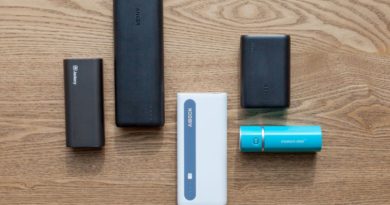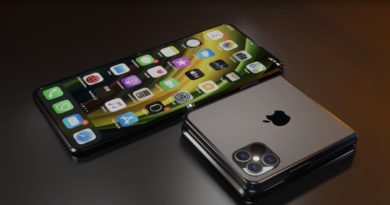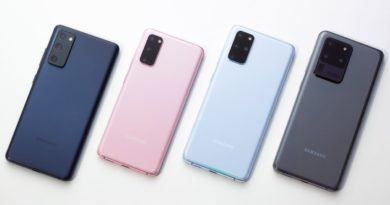5G speed: 5G vs 4G performance compared
If you haven’t been thinking much about when 5G is coming or what it means for you, that’s likely changed with the arrival of the iPhone 12 and iPhone 12 Pro. Those two phones are the first Apple devices to offer 5G connectivity. And the moment they land in people’s hands, the differences between 5G vs. 4G will be apparent to more people.
More than a year ago, every US carrier started rolling out their 5G networks, with the promise of faster speeds and lower latency. While you’ll see some fast speeds with 5G, we haven’t reached the holy grail yet. In our testing of 5G networks in a handful of cities across the country prior to the spring of this year — the coronavirus pandemic has limited our ability to go out and do testing — we’ve yet to see the sustained gigabit speeds that the fifth generation of connectivity promises. But that will change, experts predict, as carriers build out their networks.
Here’s what we expect from 5G when next-gen networks blanket the nation, and what we’ve seen from our own 5G vs. 4G comparisons combined with testing from third-party firms.
5G speed: 5G vs. 4G download speeds compared
| Average 5G download speed | 4G | |
| AT&T | 65.2 Mbps | 37.1 Mbps |
| Sprint | 59.2 Mbps | 32.5 Mbps |
| T-Mobile | 69.5 Mbps | 36.3 Mbps |
| Verizon | 792.5 Mbps | 53.3 Mbps |
4G speeds are based on the nationwide average of our last-round of LTE network speed tests. For 5G speeds, we’ve listed the results from Ookla’s testing during the third quarter of 2020.
5G: Promise vs. reality

As you can see from the above table, for most carriers, 5G speeds aren’t coming anywhere close to the 1Gbps speeds commonly associated with the faster wireless networking standard. In some cases, speeds are only modest improvements over what we’ve seen from LTE.
And it’s not just Ookla’s test that bares that claim out. A June OpenSignal report also found 5G speeds well short of the super-fast speeds that have been promised. Meanwhile, a March report by RootMetrics found that AT&T’s median 5G speeds in Indianapolis were slower than LTE speeds. In Los Angeles, the difference between 5G vs. 4G was negligible.
T-Mobile suffered the same problem. In some cities where RootMetrics tested, LTE speeds were faster. Even in the cities were 5G outperformed 4G, there wasn’t that big a gap.

Contrast that with Verizon’s 5G network. In RootMetrics testing in five cities, both median and maximum 5G speeds were substantially better than Verizon’s LTE numbers.

So what gives here? It’s a reflection of the different technologies carriers are using on their initial 5G builds. Both AT&T and T-Mobile have used sub 6GHz technology to roll out 5G from coast to coast. Essentially, that’s reallocating spectrum allotted to their LTE networks, so the speed improvements aren’t that significant, at least in the early stages.
Verizon, in contrast, focused on extending its 5G coverage in 51 cities with mmWave-based technology. That delivers super-fast signals that really approach the high-end speeds we were promised when 5G first launched. (When the iPhone 12 launched, Verizon flipped the switch on its nationwide 5G network, which uses slower spectrum.)
That makes Verizon the big winner, right? In terms of raw speed, sure — but there’s a drawback to mmWave, which you can see when looking at 5G availability as assessed by Ookla.

5G Time Spent shows the percentage of time customers with a 5G device can get a 5G signal on a compatible phone. T-Mobile, which launched a nationwide 5G network in December 2020, leads the pack with 54.4% availability and that’s with Sprint still treated as a separate entity. AT&T trails that percentage, but it only took its 5G network nationwide in July.
Verizon’s 5G availability is less than 1%. That’s because for mmWave to work, you’ve got to be in sight of a 5G tower. Those signals don’t go around obstacles and they have a hard time penetrating glass. That means Verizon’s 5G network is largely outdoors — it has towers in select arenas, for example — and it’s limited to certain neighborhoods of the cities it covers. We’d guess Verizon’s numbers will improve with the dawn of its nationwide 5G network.
For what it’s worth, RootMetrics’ September report on network performance for the first half of 2020 confirms a lot of these findings — Verizon has the fastest 5G but less coverage than other carriers. T-Mobile’s 5G availability is the broadest, but its 5G speeds are barely faster than 4G. (That’s bound to improve now that T-Mobile is using Sprint’s spectrum to improve its own 5G performance.)
True 5G is going to incorporate both sub6GHz and mmWave to provide both widespread coverage and high speeds. Indeed, that’s what T-Mobile is doing in some cities like New York and Philadelphia where it’s incorporated the midband spectrum it acquired as part of its merger with Sprint as well as some high-speed coverage to drastically improve its 5G performance in those two cities. T-Mobile says that 210 cities have added mid-band coverage by the end of September for a 7.5x improvement in 5G speeds over LTE.
5G vs. 4G: Our test results

It’s important to keep in mind that 5G performance is forever changing, as carriers build out their networks and improve upon existing service. But it’s helpful to look back at where we’ve been to chart the progress carriers are making.
In testing last year, Sprint’s network, which uses mid-band spectrum, proved to be slower than Verizon’s network, but more widespread and reliable. Sprint, of course, is being absorbed by T-Mobile, whose 5G network isn’t nearly as fast but stretches across the nation. AT&T now has a nationwide 5G network, too, augmented by mmWave coverage (which AT&T calls 5G Plus) in nearly three dozen cities.
At its peak, we saw download speeds in excess of 1 Gbps from Verizon in Chicago, and speeds in the 900 Mbps range from AT&T’s 5G Plus network in Las Vegas. T-Mobile’s mmWave 5G network in New York was more widespread than the pockets of coverage we saw in Chicago and Vegas, but only reached 600 Mbps.

Sprint’s slower 5G network turned up top speeds ranging from 350 to 450 Mbps in Dallas, hovering under 200 Mbps for most tests, but blanketed more of the city than mmWave. In Chicago, we saw similar results from Sprint, but at least we could catch a 5G signal indoors.
As for T-Mobile’s nationwide 5G network, the low-band spectrum means speeds reach between 100 to 200 Mbps at their peak, but in most cases are in line with what you’d expect from 4G. (In most cases, T-Mobile’s 5G speeds are faster than 4G on this network, but in some instances — usually indoors — we saw faster speeds on a 4G phone.) Instead, T-Mobile is more concerned with increasing access to 5G with this low-band network for now, as this form of 5G reaches 250 million people.

5G is already up to 10 times faster than 4G in some places, which is insanely cool. Theoretically, 5G devices will able to reach peaks of 10 Gbps. But what does a person actually do with all that speed?
Well, in daily life, little annoyances like forgetting to download a full-length movie before a flight will disappear. 5G will enable gigabit downloads in seconds. Even now, before 5G is fully built out, I was able to download a 1-hour, 48-minute movie in just 49 seconds over AT&T’s 5G Plus network, which hit peak speeds of 956 Mbps in my testing. Even on T-Mobile’s slower low-band 5G network, we could download the 3.5-hour movie The Irishman in less than 3 minutes off Netflix.

Adriane Blum, Ookla’s marketing director, said you’ll still be able to do all the “same things you did prior to 5G rolling out, but what’s going to happen is it will happen at a clip that will feel like the blink of an eye.”
It isn’t just 5G’s crazy-fast peak speeds that will improve our lives. The new generation of connectivity will also improve average speeds, because carriers are able to make use of new frequencies that were previously unused for mobile, opening up capacity.
“You’re raising the maximum speed, but you’re also raising the speed at the worst time of day in the worst location,” said Ian Fogg, Opensignal’s vice president of analysis.
That means when you use your phone in congested areas, you’ll still have reliable connectivity.
But perhaps even more importantly, there are changes we don’t see coming.
“This kind of conversation has come up at the evolution of every new wave of technology,” Blum said. “Before 4G was ubiquitously available, people weren’t streaming content on their phones. There just wasn’t the bandwidth. And now that’s something people primarily do on their phones. Whether or not we imagine it, consumers find a way to use it.”
Beyond faster speeds, 5G will also deliver lower latency. We haven’t been able to put that to the test yet, but according to experts, 5G will reduce latency to less than 1 millisecond. At the end of 2019, 4G latency hovered between 42.2 and 60.5 milliseconds in tests across 40 major U.S. cities, according to Opensignal, which is still long enough to be perceptible when using augmented reality or virtual reality. The reduction in latency is expected to make AR and VR ubiquitous.
5G vs 4G price: How much more does faster speed cost?
The good news is that 5G coverage won’t cost you any more than LTE — so long as you’re willing to sign up for an unlimited data plan.
At Verizon, you’ll get 5G coverage with the carrier’s Play More ($80/month), Do More ($80/month) and Get More plans ($90/month). The cheapest unlimited option — the $70-a-month Start Unlimited plan — requires a $10-a-month add-on for 5G.
AT&T used to require subscribers to sign up for an Unlimited Extra ($75/month) or Unlimited Elite ($85/month) plan. But with the launch of nationwide 5G coverage, Unlimited Starter subscribers ($65/month) now have 5G coverage, too.
T-Mobile includes 5G coverage with its unlimited data plans, including Essentials ($60/month) and Magenta ($70). Even T-Mobile’s $15 T-Mobile Connect prepaid plan has 5G coverage, though with only 2GB of data, that’s not a lot of data to play around with.
4G: Faster than ever
The good news: Even if it takes a while for 5G networks to realize their full potential, wireless carriers have been simultaneously working on their 4G LTE networks. 4G is now more widespread, reliable and faster than ever. That’s crucial, because unlike past generations of network connectivity, 4G and 5G will coexist.
In 2014, when internet testing and data analytics firm Ookla started aggregating and analyzing mobile speeds from its Speedtest app, the mean download speed over 4G was 15.19 Mbps. According to the company’s latest report, which analyzed speed test data from 4.1 million unique devices in the first half of 2019, download speeds now average 33.8 Mbps.
Milan Milanovic, Ookla’s resident network expert, recalled seeing peak download speeds top out at 50 Mbps in some tests back in 2010, when 4G was in its infancy. Now LTE devices can hit hundreds of megabits per second.

Every carrier has worked to boost LTE speeds and improve coverage in recent years to make the transition to 5G smoother. But only one carrier rolled out a new label to describe its effort: AT&T. And despite the controversy over its 5G E logo, which led some subscribers to think they have 5G when they don’t, AT&T now offers the fastest LTE network in the U.S. According to Ookla, download speeds over AT&T’s network average 41.65 Mbps during the third quarter of this year.
“AT&T is adding more lanes to the highway and adding more frequency bands,” Milanovic said when we spoke to him last year. “If you have a [5G E] capable device, the network is ready to serve you four or five channels at the same time, which means faster speeds and completing tasks quicker.”
Other operators are doing the same thing, Milanovic noted, but they’re not sticking 5G labels on their advanced LTE networks. Verizon’s network, which topped our list of fastest wireless networks in 2018, isn’t quite as fast as AT&T and T-Mobile anymore, Ookla says, but it is more reliable in more areas than its rivals are. In other words, you’re more likely to be shunted to 3G on AT&T than you are on Verizon.
5G vs. 4G outlook

Just as 4G changed our lives with ride-hailing and video-streaming, 5G’s speeds will enable new ways of doing things.
“We’re in a tremendous period of change, and it’s going to happen very rapidly,” Ookla’s Blum said. “There’s been a lot of talk about 5G, and it’s been very speculative, deep in a lab somewhere being developed and tested. This is the first year we can actually say 5G is here.
“It’s not here for everyone, and it will take time to get to everyone,” Blum added. “But it is here. I think quarter to quarter for the next couple of years, it’s going to be mind-boggling amounts of growth.”


